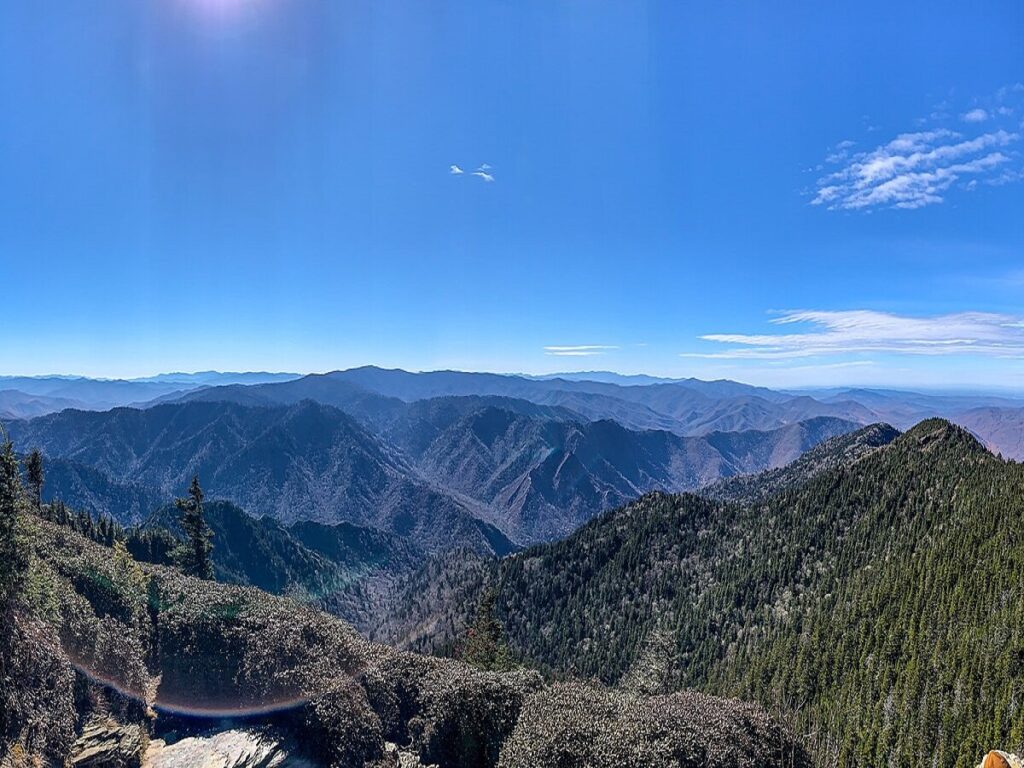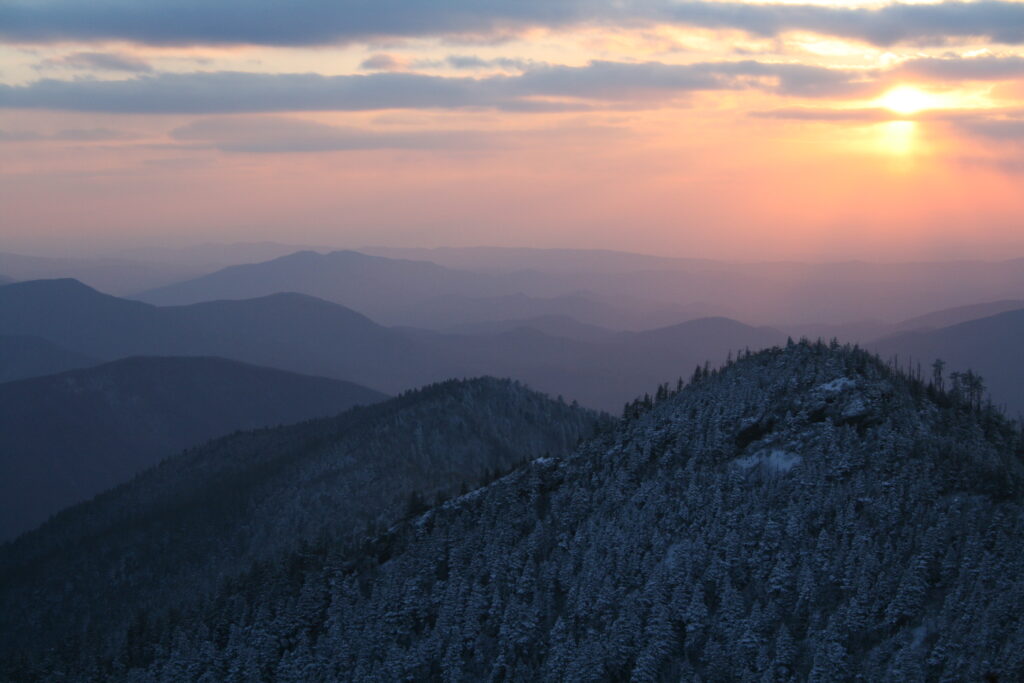Nestled in the highlands of northeastern Tennessee, just a short drive from Johnson City, lies a mountain retreat that feels both timeless and untouched: Roan Mountain. With its dreamy mist-filled mornings, rolling balds, and echoes of a historic inn once perched among the clouds, it remains one of Tennessee’s best-kept secrets. The mountain’s cool air and sweeping views once drew travelers seeking both beauty and health, and even today, Roan Mountain’s serene aura makes it a haven for wanderers and romantics alike.
Geographical Setting

Roan Mountain rises along the Tennessee-North Carolina border, forming part of the Unaka Range within the Southern Appalachians. Its summit stands at an elevation of over 6,200 feet, commanding some of the most breathtaking views in the region. The highlands are famous for their open grassy balds, rolling ridges, and a vast rhododendron garden that bursts into color each summer. Mist often cloaks the valleys at dawn, revealing a landscape both wild and ethereal, a perfect setting for history, legend, and peace.
Misty Mornings and Natural Beauty

Every morning on Roan Mountain feels like stepping into another world. Fog drifts through the valleys and wraps around the peaks, leaving the trees and meadows glistening in dew. As sunlight breaks through, it reveals layers of cloud and forest below a scene that has long captivated travelers and photographers. The rhododendrons that blanket the balds add splashes of color to the silver mist, while the scent of pine and wildflowers completes the mountain’s tranquil magic. These misty mornings retain their signature charm.
The Vision of General Wilder

The story of Roan Mountain’s historic inn begins with General John T. Wilder, a Civil War veteran and visionary industrialist. In 1877, he recognized the potential of the cool mountain air as a retreat from the southern heat. He first built a small spruce lodge at Tollhouse Gap, intended for summer visitors seeking health and rest. Seeing its success, Wilder expanded his vision into something grander, a luxurious high-mountain hotel unlike any in the region. Thus began the dream of Cloudland.
The Grand Hotel: Cloudland
By 1885, General Wilder’s dream took shape as the grand Cloudland Hotel. Built of timber and painted white, the hotel stood dramatically astride the Tennessee-North Carolina line, with a white stripe running across its floor marking the border between the two states. The hotel boasted 166 rooms, fine furnishings, and a dining hall overlooking endless mountain views. Guests arrived by wagon from the valley, seeking luxury in the clouds, an experience of elegance surrounded by pure mountain wilderness.
Health and Leisure in the 19th Century
In the late 1800s, the Cloudland Hotel became synonymous with health and high society. Doctors and newspapers promoted mountain air as a remedy for respiratory ailments, hay fever, and fatigue. Guests lounged on wide porches, strolled through rhododendron gardens, and played croquet on the grassy balds. Fine dinners and dancing filled the evenings, and days were devoted to leisure and mountain exploration. It was a blend of wellness, luxury, and adventure, the perfect formula for an age enchanted by nature’s cure.
Challenges of a Mountain Retreat
While the Cloudland Hotel offered unmatched views and serenity, maintaining it atop a 6,000-foot peak was no small feat. Supplies had to be hauled by mule over rugged mountain roads, and harsh winters battered the structure year after year. Storms often left guests stranded, and isolation made operations difficult. Despite its charm, the mountain’s remoteness worked against the hotel’s long-term success. What was paradise in summer could turn unforgiving by late autumn, foreshadowing the resort’s eventual decline.
Decline and Vanishing Glory
By the early 1900s, the challenges of upkeep and access had taken their toll on the Cloudland Hotel. Visitor numbers dwindled, and maintenance costs soared. After changing hands several times, the grand structure was eventually abandoned. By 1910, the once-famous mountaintop resort stood empty, and by the 1920s, little remained but its stone foundations. The mountain reclaimed its peace, leaving behind a haunting story of ambition and beauty, a relic of Tennessee’s golden age of mountain resorts.
Roan Mountain’s Modern Echoes

Though the Cloudland Hotel is gone, its spirit endures in Roan Mountain’s quiet charm. The nearby village of Roan Mountain and the state park that bears its name now welcome hikers, campers, and history enthusiasts. Trails trace the same paths once walked by hotel guests, and interpretive signs tell the story of Wilder’s grand experiment in the clouds. Visitors can stay in cozy lodges, explore scenic overlooks, and feel the same refreshing chill that once drew Victorian travelers here.
The Experience Today
Modern visitors find Roan Mountain just as enchanting as those from centuries past, only now, its luxury lies in simplicity. The Appalachian Trail winds across its balds, offering panoramic views that stretch for miles. Morning fog still rolls over the ridges, and the mountain air carries the scent of rhododendron blooms. Whether camping beneath starlit skies or watching the sunrise from Carver’s Gap, Roan Mountain continues to inspire awe through its quiet, natural grandeur.
Why It Remains a Hidden Gem
Despite being just forty minutes from Johnson City, Roan Mountain remains refreshingly uncrowded. Its combination of misty mornings, historic legacy, and untouched beauty sets it apart from more commercialized destinations. The mountain whispers the story of a bygone era when elegance met wilderness atop the clouds. For those seeking peace, history, and a connection to nature, this highland sanctuary stands as Tennessee’s true hidden gem, where the past still lingers in the mountain mist.
Comments